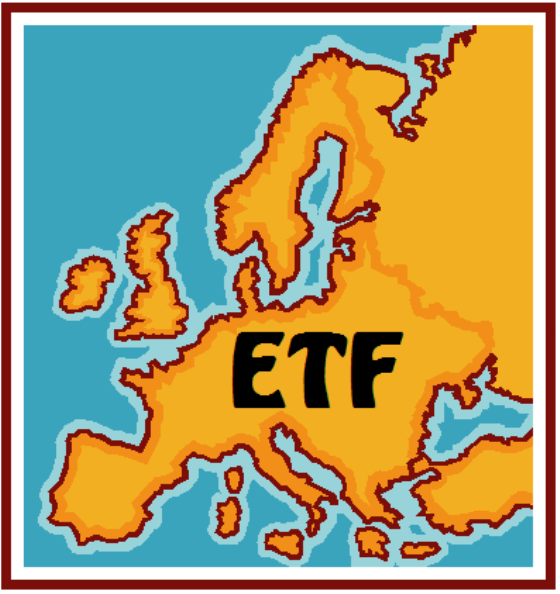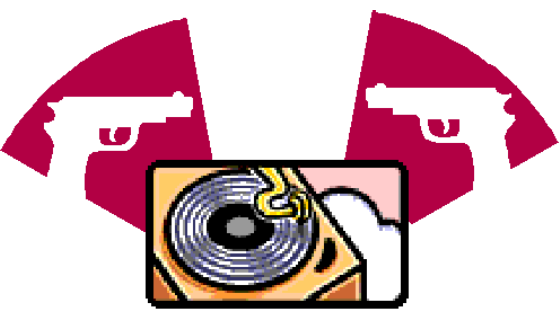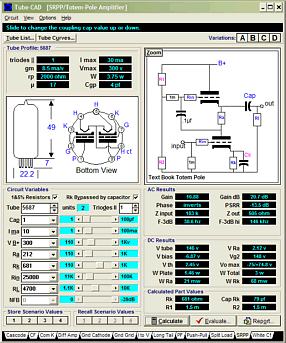| John Broskie's Guide to Tube Circuit Analysis & Design |
10 December 2005 
Tragedies: large and small He was an amazing man. Because he was kind and generous, he had many friends and few if any enemies. His kindness and understanding nature allowed him to connect quickly and easily, especially with children and animals, domesticated and wild. For example, he would visit friends and if the stay was long enough, their dogs would want to go home with my father. And I remember being a child and our visiting the zoo, where I watched my father speak reassuringly to a distressed monkey. After a few minutes, the anguished animal was calm and attentive to my father’s every word and gesture. A true polyglot—something very rare in the USA—he had at least reading knowledge of five languages: English, French, Italian, Portuguese, and Spanish. For example, his library held a few thousand books, more than half of which were not in English, and he enjoyed reciting from memory Shakespeare’s tragedies in Italian. In fact, he probably read more novels in Portuguese (which offers the smallest catalog of fiction of the five languages) than most English teachers have read in English. His biggest regrets were not learning to speak German and not traveling to Italy. Although never an audiophile, he was a great music lover. It never took more than a few notes before he would rightly identify the name of the jazz saxophonist or pianist playing. On a much more trivial note, a month ago I lost my main system hard drive. I wasn’t too worried at first, as I keep three layers of backup on all the files that I have produced. But worried I became, once I realized that my fonts (which I had collected for over more than a decade and from many sources) were gone and my old files that required them no longer looked right without them; that my email was gone as well (I used to back up my email, but when I switched from Eudora to Thunderbird, I failed to assign its email to the backup); and other files and programs that I needed were gone. I tried many data-recovery programs, but only one worked: GetDataBack for NTFS. With this program, I was able to rescue most of my much-needed data. 
European Triode Festival But before I list any further benefits that fell my way, I should explain just what the ETF is all about. First of all, it is not a "show," not a trade show nor an open-to-the-public convention. Rather, it is a true festival: a small, intimate gathering of 80 tube-loving aficionados for four days and three nights of talking, drinking, listening to lectures and music, more drinking, eating, and making new friends. In spite of so few days, I know that I have made some new lifelong friends, as I am sure that many others did as well. This is all but impossible at a Stereophile show. And the reasons are obvious: the whole point behind ETF is friendship, community, and enjoyment, whereas the point behind a stereo show is money, money, and, ultimately, money. If more money could be made holding a show devoted to cat litter boxes, then such a show would push the stereo show out of its way. In sharp contrast, although few tube-related goods could be bought at the festival, ETF itself is nonprofit. Instead of a huge hotel, the ETF rents a retreat center (owned by the Catholic Church) in the charming town of Langenargen, Germany, which is found on the northern shore of Lake Constance (AKA the Bodensee), the lake that separates Germany from Switzerland. The town and the retreat were charming. So, I feel that I got the better part of the deal, as I had a great time, saw beautiful sights, made new friends, drank good beer (and Grappa), whereas they only got a poorly delivered speech—certainly the worst I have given in my life. Hard to believe? (Especially since the topic was modeling triodes mathematically.) Since I am one of the few who can claim to have a good grasp of this topic, and one within which I have discovered something useful, and since I can talk for hours on most audio topics at the drop of a hat, I can only look to the tools I chose for my presentation to explain it (plus at least a week's worth of sleep depravation). I relied on Power Point, which I hadn’t used for over a decade, and I was without a blackboard, which is like Tiger Woods being without a set of golf clubs. Nor could I print out my presentation onto paper, so I had to rely on my laptop’s screen. What a mess. It is one of those moments when you wish that life had a rewind button. I plan to write up my speech and post it to both this site and the ETF site, so the participants so they can read what I meant to say. Next year, the ETF moves to Holland. The site has not been determined yet, but, no doubt, it too will be serene and attractive. Before you rip your credit card from your wallet, understand that the first stab at booking goes to those who have participated in previous festivals and that, almost instantly, the event is booked up. Why not get a larger setting and allow more tube lovers to attend? They could, but then the event would more closely resemble a stereo show, rather than an intimate festival. To be honest 80 participants was on the high side, as 50 would create a stronger family intimacy, as I found it impossible to keep track of all the names. Isn’t odd that some of the loneliest and most alienated people live not in small towns or hamlets, but in the most crowded cities? More people means you have to make an effort to find and keep a group of friends; it doesn’t just happen as you go about your day, seeing the same folks in stores, on the streets, in church, etc. Of course, churches face a similar problem: small congregations are intimate without trying, but they can’t get larger if the structures don’t change to accommodate more people; large congregations have learned to break the total congregation down into sub-groups, so everyone knows other people and it feels like family even if total membership is 5,000 or more. Perhaps an ETF done on a large-church model could work, with sub-groups of 12 you meet with once a day. But in the format it has now, it has to stay the size it is. On the other hand, someone with a lot of energy and planning skills could start a similar conference in North America. (Any takers?) John Atwood and I kicked around the idea of finding a pleasant retreat in California. The big problem with California, however, is that we don’t have a down-season when rates are low. Yes, it gets cold here, but it is always drier and warmer than elsewhere, so California is always in season. Maybe Nevada or Oregon? Why not split the difference between the West and East Coast and hold it in Topeka, Kansas? It would be fair, but unlikely to draw enough participants. But to be honest, it seems to me that in America, a triode festival like the ETF must be held on one of the two coasts, as it must draw on the two huge population-heavy areas of the country. I would like to see such an event called the North American Triode Festival, as there are many tube enthusiasts north and south of the USA. Vancouver might be fun. Mexico could also be a fun place to hold a festival, but the thought of having the custom agents take apart our tube gear in search of drugs is a bit of a turn off.
ETF Highlights Allen Wright My view has always been: use whatever works best. Apparently, Allen shares this view, as he freely mixes technologies, striving to get he best of each. In other words, if you haven’t picked up a copy of his book, The Tube Preamp Cookbook, then you are probably making the same mistake that I made. Don’t. In his book, you will find many interesting circuits, from simple to complex, explained in a personal, frank, humorous, question and answer, easygoing fashion that makes the book in many ways the anti-electronics-textbook, which is a big compliment in my view. Interestingly enough, we never talked circuits, but we did talk. I enjoyed his company and his sense of humor, as we walked through the quaint German town. He does not have a German accent, as I had imagined, although he has lived until recently in Germany; he was born in New Zealand (and to my mind, he seems more Australian than New Zealander; his temperament is more like John Howard's than Helen Clark’s, for example). Too bad we live in different continents, as it would be great to get together with him more easily and more often. Per Lundahl His presentation was fascinating. He covered every aspect of transformer manufacturing from start to finish. Basically, the reason transformers cost as much as they do is that require great deal of skill, effort, and material to make. Morgan Jones By the way, I mentioned it before in this webzine/blog that Mr. Jones’s book, Valve Amplifiers, was well worth buying. Well, it is. I get at least one request a week for recommendations for old electronic reference books. I own several hundred old books, so the list can be quite long. But really none of these old books—and I do love many of them dearly—is as useful to the modern tube constructor as is Morgan’s book. Theory, practice, and art—all are nicely covered by Morgan. Over 600 pages in length, his book covers a wide array of topics that are absolutely pertinent to our hobby: basic theory, power supplies, parts, tube topologies, RIAA equalization, and much more. The book sells for less than $50 and it is worth closer to $100 (or $500 worth of phone calls to tube gurus). Note: if you own the 1st or 2nd edition, then you don’t own Valve Amplifiers, as the 3rd edition is much fatter and much richer in invaluable content and insights. If you own an earlier edition, buy the 3rd edition and donate your old copy to your public library or give it to tube neophyte; spread the word on tube amplifiers. So, when your significant other asks just what do you want for Christmas, Morgan’s book is the easiest and best answer. (I have to admit that I have a stake in promoting Morgan’s book: if all the tube enthusiasts that e-mail me throughout the year asking for help and advice—all 1,000 to 2,000 of them—bought this book, then I would have significantly less e-mail to answer. In Silicon Valley, they have a saying: RTFM, which stands for Read The F***ing Manual. Maybe, we should create our own acronym: RMJB, Read Morgan Jones's Book.) Christian Rintelen I spent a good deal of time with Christian and I rarely met anyone more interesting, intelligent, and broadly educated than he. Whether the conversation’s topic was tubes, music, films, literature, food and drink, politics, history, publishing, culture, language, motorcycles, Europe or the United States, he was absolutely fluent. He is what civilization aims at, but seldom realizes, a universally educated man who cannot be pigeonholed into any narrow category or restricted specialty; his mind and soul are too expansive for anything that constricting. Now, if only we could clone about a thousand of him and disperse them throughout the world, starting with the United States… just wishful thinking. Stuart Yaniger and Chris Vryonides As Danny DeVito said in the movie, Twins, upon seeing Arnold Schwarzenegger, “It was like I was looking into a mirror.” Well, asides from the salt-and-pepper hair, the glasses, and the goatees, we don’t look that much alike, but we do think alike to scary degree. Chris lives in London and we won’t be mistaken for twins by anyone. His sense of humor (there’s that Brit genius again) just killed me. He should have his own TV show or radio hour. On top of that, he has a keen interest in the underlying physics behind electronics. The fact that he is a regular reader of this journal doesn't hurt either. I have a good friend who has moved to London and he wants me to visit him there. Well, the chance of meeting Chris again makes the trip even more inviting. Pieter Treurniet 
Phono-stage shootout For example, although all the preamps were measured for gain at 1kHz, the measurements meant little, as they were performed with a signal generator driving the preamp’s input. But as each preamp held a different input impedance, the gain differed when the phono cartridge’s series resistance was added to the mix. The result was that some preamps played much louder than others, which instantly kills a fair shootout, as the ear hears an increase in volume as an increase in quality. The solution is to measure the preamps with a test record or a sonic stylus cleaner, not a function generator. In addition, many preamps were miswired, swapping the right channel for left. As I sat to the extreme front and left of the audience, I could not hear the right loudspeaker, so this wiring error had a dramatic effect on what I heard. So far, I have described what went on with the preamps, but as is the case in all audio shootouts, the audience was being tested just as much as the preamps are. We were asked to raise our hands as we voted for the better sounding preamp, while the count was uttered aloud. Not a good idea. Here’s why: we aren’t much smarter than ants when it comes to stampede behavior. 
Cuban researcher Ernesto Altshuler of the University of Havana has found that ants behave as stupidly as people do in burning nightclubs. He found that ants will do what we humans do: they look for what the group is doing, rather than what makes more logical sense. For example, you are in a swarming nightclub, standing under an emergency exit sign and leaning against the exit door, when you see flames and hear people screaming. Panic set in and you don’t know what to do, but you see at the other side of the room five people running out a door to safety. So, what do you do? Of course, you open the door you are leaning on and escape; but then you are exceptional, as 99.9% of humanity rushes to that one door that those five people ran through, crushing each other on the way, and trampling underfoot those who have fallen. Ants do the same. If they see a few ants escaping a drop of ant poison, they leave the exit they are standing in and run through the poison to get to the popular exit (and, no, the chemical trail has nothing to do with it, as they cannot smell it until they reach it and in the dark they just go out the nearest exit).  Which is longer? A or B? It depends on what everyone else thinks. Which is longer? A or B? It depends on what everyone else thinks.
Numerous studies have shown that group pressure can force you see short lines as being longer than truly longer lines. So, when you see many respected audiophiles raise their hand, which way are you going to vote? The solution is an easy one: have everyone close their eyes while they vote and do not count aloud. Still, we had a good time and all the preamps sounded good, but I wouldn’t worry too much about the results of the shootout. Next year, ETF will hold a new shootout. Guido Tent, who is running the ETF now, doesn ’t know what will be in contention, maybe power amplifiers that weigh less than 10 kilos. Aikido PCBs [Update from 2006, PCBs are available at GlassWare's Yahoo Store. ] Yes, I know that it has been a long time, that many are eager to start soldering, and that while I waited for my boards to arrive, others were making a bundle off my design. The last item brothers me the least. Imitation and sincerity…you know the full version. It has taken me a long time to realize how few are the number of original circuit designers (or rather, circuit topologists) in the world; they are almost as rare as original, interesting movies out of Hollywood. Thus, original circuits are also rare...except at the Tube CAD Journal. And this journal's last original circuit has yet to be posted. In the future, however, I will bring out the PCB or, even, a kit or finished product first, and then the schematic and explanation. Actually, I am uncomfortable with selling product and exploring circuitry at the same time. Isn't every mother's child beautiful? If the magazine Consumer Reports started making and selling shampoo, cars, and toasters, would you trust them to report and review accurately? Therefore, for the last year, I have been contemplating creating a new webzine devoted to actual construction of preamps, power amplifiers, voltage regulators... The webzine would detail all the practical considerations entailed in actually building a tube-based project. Sounds great, so why haven't I started it? I cannot do it alone. I have learned this from this site and from my GlassWare software. It would take at least three or four to get such a project going. In addition, it would have to actually make money, which means advertising or PCB or kit sales would be needed, which in turn creates a huge amount of work overhead. Yet, it is so tempting. Next time //JRB |
Tube CAD does the hard math for you. This program covers 13 types of tube circuits, each one divided into four variations: 52 circuits in all. Tube CAD calculates the noteworthy results, such as gain, phase, output impedance, low frequency cutoff, PSRR, bias voltage, plate and load resistor heat dissipations. Which tube gives the most gain? Tube CAD's scenario comparison feature shows which tube wins. Windows 95/98/Me/NT/2000/XP
For more information, please visit our Web site : To purchase, please visit Antique Electronic Sales' website: |
|||
| www.tubecad.com Copyright © 1999-2004 GlassWare All Rights Reserved |











